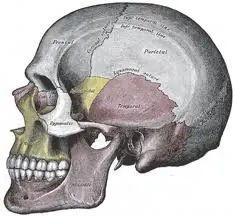From news articles to television programs to events in our own lives, we are exposed to a blizzard of terms relating to head injuries. Sometimes they’re used correctly, sometimes they’re not, and in either case they can be confusing.
 Traumatic Brain Injuries
Traumatic Brain Injuries
A traumatic brain injury — often abbreviated as TBI — is brain damage that has resulted from some outside event or force. This trauma can be from a direct blow to the head, such as hitting one’s head on part of a car’s interior during a motor vehicle collision. It can also be concussive, such as a soldier might experience from a nearby explosion. A TBI can also result from rapid movement of the head, such as the “whiplash” movement that can occur in a car crash — in this instance, no direct blow to the head occurs, rather the brain “sloshes” back and forth, impacting the inside of the skull.
TBIs include “closed head injuries” in which the skull and the membranes underneath it remain intact and “open” injuries in which the skull is fractured or penetrated and the membranes ruptured. Open injuries present additional concerns in the form of routes for infection, possible bone fragments, etc., but closed head injuries can be just as devastating.
“Concussion” is a term that is used less frequently these days by doctors to describe a brain injury, but which is still in common everyday use. The more common term used in medicine is “mild traumatic brain injury” or MTBI. Concussions or MTBIs can result either from direct blows to the head or from the rotational or acceleration/deceleration forces such as from the “whiplash” movement of the neck and head.
Brain Injuries from Intracranial Bleeding
“Subdural and subarachnoid hemorrhage and hematoma” — The brain is surrounded by outer protective membranes called the dura mater and the arachnoid, and these terms simply refer to bleeding that has occurred under (sub) either the outer dura mater membrane or the inner arachnoid membrane. The active bleeding event is the “hemorrhage,” and a “hematoma” is a pooling or collection of blood. These conditions, especially when the result of an acute injury, can be life-threatening. The bleeding can exert pressure on the brain that can produce widespread brain damage, even death.
“Brain damage” simply refers to the destruction of brain cells, whether as a result of trauma or disease. If traumatic, it can be from the blows, concussive, and/or acceleration/deceleration forces that produce TBI and/or from pressure within the skull that results from subdural or subarachoid hemorrhages and hematomas.
Symptoms of Brain Injuries
Some people are fortunately able to recover from brain injuries without significant permanent symptoms, although even for them there may be microscopic damage to the brain cells and tissues. Others may experience problems such as post-concussive disorders with significant cognitive and emotional problems.
I’m Ed Smith, a Sacramento personal injury attorney with the primary accident information site on the web, AutoAccident.com.
If you or a loved one has suffered a serious injury, including any type of traumatic brain injury, call me now at 916.921.6400.
You can find out more about our office by looking for us either on Yelp or on Avvo, the attorney rating site.


